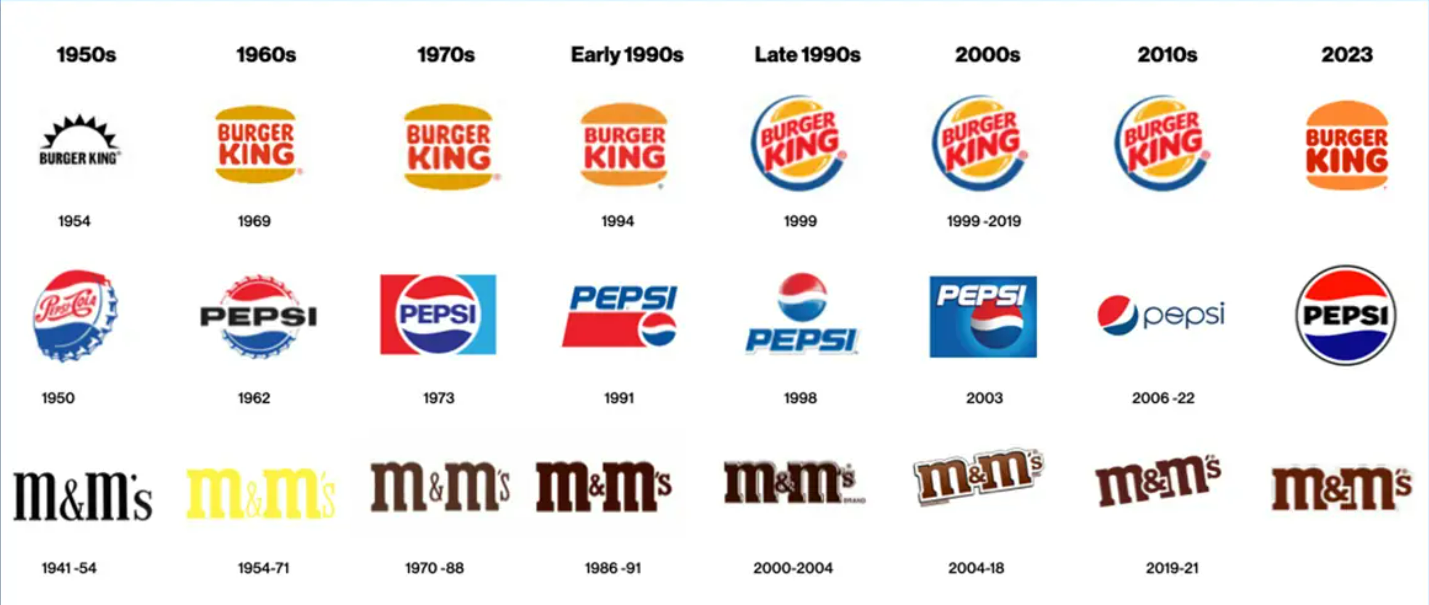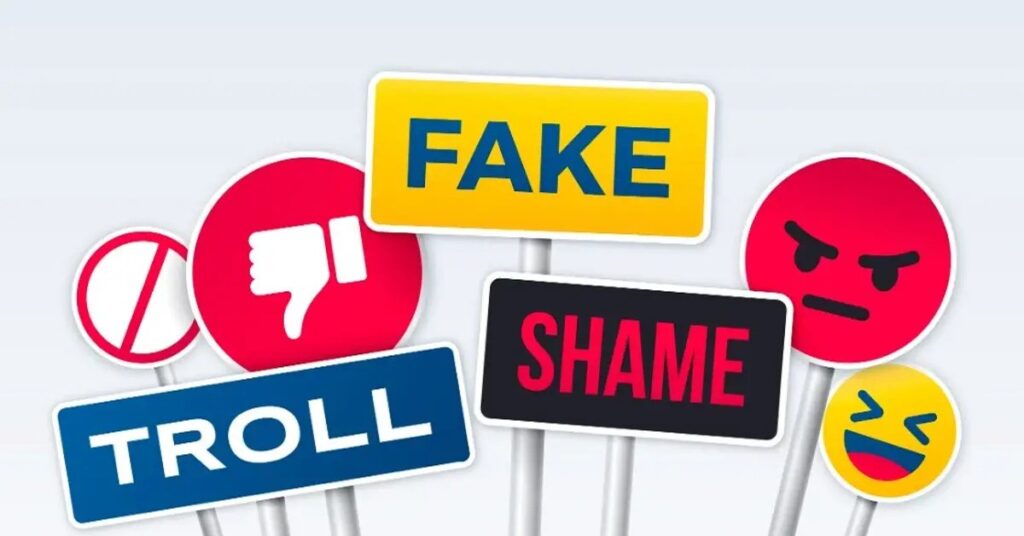Major brands like Burger King, M&M’s, and Pepsi are dropping the flashy identities they adopted in the 1990s in favor of more classic, iconic designs. These retro rebrands are receiving widespread applause and even boosting stock prices. As brand practitioners, we’ve known for years that simpler is better. So why did it take so long for brands to come around, and why is it happening now? Let’s check out the possible reasons.

1. The Lockdown Effect
The global pandemic likely sparked brands to reevaluate their identities. When stores closed, impulse brands had time to reflect on what really makes them distinctive. They realized they’d need bold, memorable branding to stand out when shops reopened. Looking to their roots allowed them to rediscover their core brand essence.
2. Most Marketers Don’t Think Like IT Pros
IT professionals know that when technology acts up, the solution is usually returning to the optimal design. Yet many marketers assume their current brand identity must be successful or that rebranding is too expensive. They argue that younger generations won’t recognize a classic identity.
Burger King found that more people drew their pre-1999 logo from memory. The lesson is to start from your brand’s best historical version, not where you are now. Is it evolution or revolution? No, it’s just putting the brand back in consumers’ hands.
3. ‘Corporate Ego’ Has a Long Memory
Suggesting that a company’s crown jewel identity needs replacement is bold and risky, especially if key decisionmakers built their careers on that work. But original creators have likely moved on, and evidence shows the power of classic designs. Look at fashion trends, vintage brand materials’ popularity, and social conversations to see that love of retro identities is timeless.
4. Classic Branding Is Digital-Ready
Pre-digital brand identities are simple, bold, and authentic—perfect for today’s digital world. Their simplicity allows them to be fluid, reactive, and culturally relevant in ways complex identities can’t. They can easily adapt, move, and react to cultural shifts, making them highly effective in capturing the attention of today’s digitally engaged consumers.
5. 90s Nostalgia Is In
From Friends reruns to Air Jordans, Gen Z loves ’90s pop culture. Tapping into pre-social media identities just makes sense. When Palace collaborated with Stella Artois, they heavily featured the ’90s brand identity. It’s no wonder brands look to identities of that era for inspiration.
6. The Importance of Distinctiveness
The key to brand success is distinctiveness. Having the bravery to revisit an identity that’s lived in consumers’ minds for 30 years—and is frankly cooler than your current look—just makes smart business sense. It’s not retro, vanity, or foolish; it’s strategy.
Why Distinctive Brand Names Are the Key to Success in the Digital Age?
There are various reasons why a unique brand name is of utmost importance.
Firstly, it creates brand recognition. When people see or hear a unique brand name, they are more likely to remember it and associate it with the brand’s products or services. This can lead to increased sales and customer loyalty.
Secondly, it helps to establish the brand’s differentiation from its rivals. In a cluttered market, it is indispensable for brands to find a way to take the spotlight. A unique brand name can help a brand to stand out among the others.
Thirdly, a unique brand name helps to establish trust and credibility. People are more inclined to believe that the brand is genuine and reliable when they see a unique brand name. This can also lead to increased sales and customer loyalty.
Finally, a distinctive brand name helps to create a positive emotional connection with consumers. It evokes a sense of familiarity and establishes a personal relationship with customers, which can help in nurturing brand loyalty.
If you’re looking to create a successful brand in the digital age, it’s essential to have a distinctive brand name. A distinctive brand name can help you to create brand awareness, differentiation, trust, and a positive emotional connection with consumers. All of these things are essential for success in the digital age.
Here are some tips for creating a distinctive brand name:
Creating a distinctive brand name is not easy, but it is essential for success in the digital age. By following these tips, you can increase your chances of creating a brand name that will help you to achieve your business goals.
Do your research: Before you start brainstorming brand names, it’s important to do your research and understand your target audience. What are their needs and wants? What kind of language do they use? What kind of images do they respond to? Once you understand your target audience, you can start to brainstorm brand names that will appeal to them.
Keep it simple: Your brand name should be short, sweet, and easy to remember. The last thing you want is for people to forget your brand name.
Make it relevant: Your brand name should be relevant to your business and your target audience. It should give people a good idea of what your brand is all about.
Be creative: Don’t be afraid to think outside the box when brainstorming brand names. The best brand names are often the ones that are unexpected and unique.
Test your brand name: Once you’ve come up with a few potential brand names, it’s important to test them out with your target audience. This will help you to see which names resonate with people and which ones don’t.
Use a name generator: There are a number of online tools that can help you generate brand names. These tools can be a great way to get started if you’re stuck in a rut.
Get feedback from others: Once you’ve come up with a few potential brand names, it’s important to get feedback from others. This could include friends, family, colleagues, or potential customers. Feedback can help you to identify any potential problems with your brand name and to choose the best option.
Don’t rush the process: Creating a distinctive brand name takes time and effort. Don’t be afraid to take your time and to brainstorm multiple options. The best brand names are often the ones that come to you after some time and thought.
In today’s crowded market, the most important brand quality is distinctiveness. Classic, iconic identities are the key to standing out. By going back to their roots, major brands are rediscovering their distinctiveness and creating brand names and identities that resonate into the future.
The Takeway
It has taken brands a long time to realize that a simple, iconic design is the key to standing out in today’s competitive market. The global pandemic encouraged brands to reevaluate their identities, and they discovered that a bold, memorable branding is what makes them distinctive. Even though some have argued that rebranding is too expensive and that younger generations won’t recognize classic identities, evidence shows the power of retro designs. Pre-digital brand identities are now seen as perfect for today’s digital world because of their simplicity, fluidity, and cultural relevance. The return to classic branding is strategy, not vanity, for major brands who want to rediscover their roots and create brand names and identities that resonate into the future. A distinctive brand name is one of the most important assets of a successful business. It can help you to create brand awareness, differentiation, trust, and a positive emotional connection with consumers. All of these things are essential for success in the digital age.



